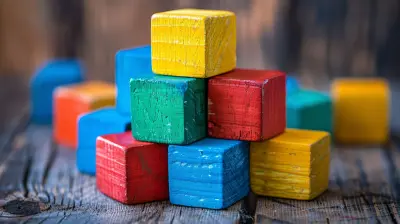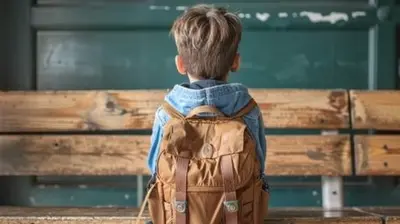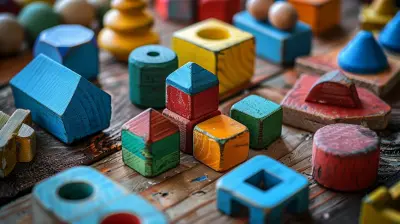How to Childproof Your Bathroom for Maximum Safety
5 May 2025
As parents, we all want to ensure our little ones are safe at home. While we often think about baby-proofing the kitchen or living room, the bathroom is one of the most accident-prone areas in the house. Slippery surfaces, hard edges, and various hazardous items make it a potential danger zone for curious toddlers.
So, how can you make your bathroom a safer space for your child? Don't worry—I’ve got you covered! In this guide, we’ll walk through effective strategies to childproof your bathroom and keep your little explorer out of harm’s way. 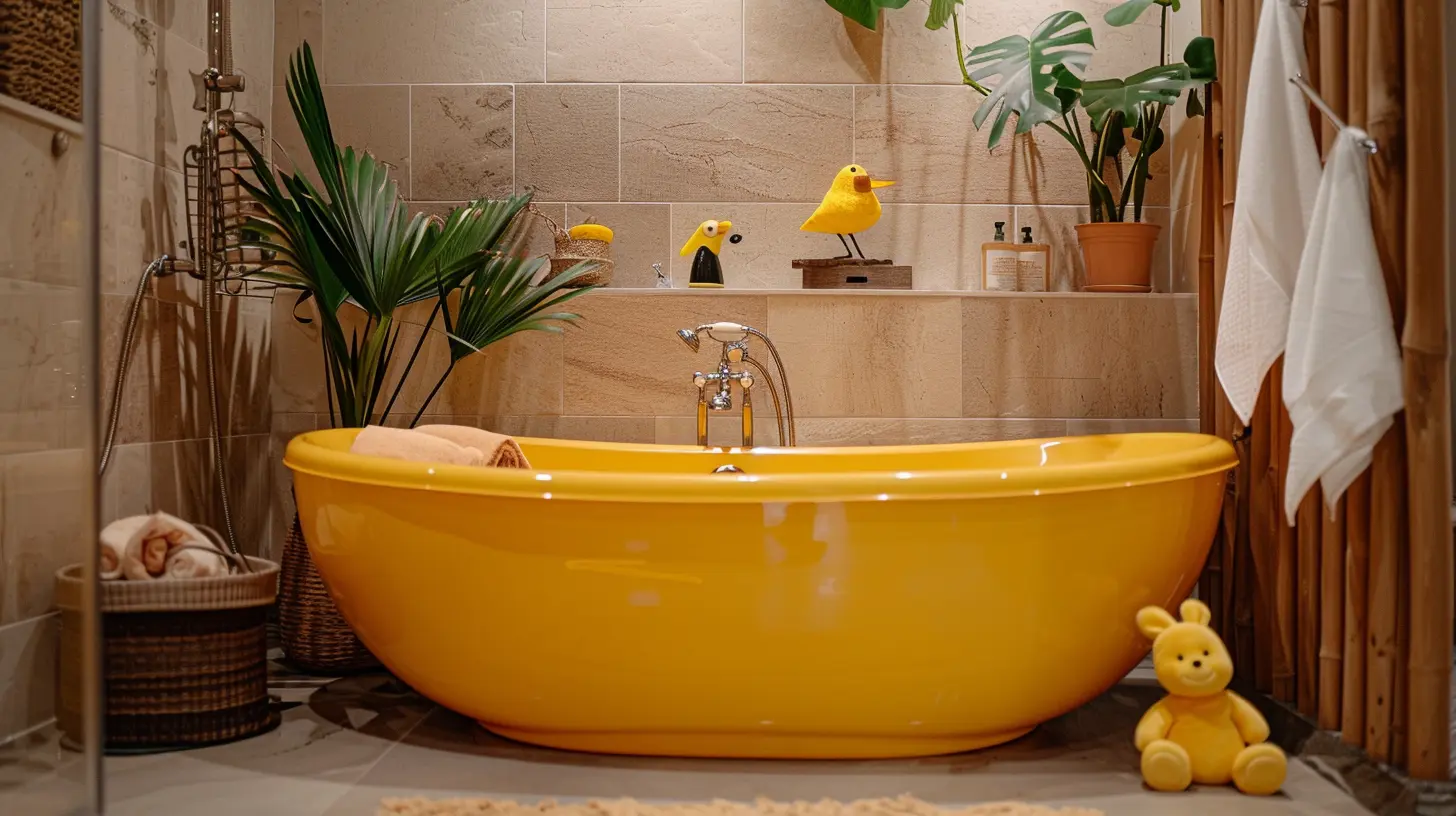
Why Childproofing Your Bathroom Is Essential
Before diving into the details, let's talk about why childproofing your bathroom is so important. Bathrooms contain multiple hazards, including:✅ Slippery floors – Wet tiles can lead to nasty falls.
✅ Sharp objects – Razors, scissors, and tweezers are often stored in the bathroom.
✅ Toxic products – Cleaning supplies, shampoos, and medicines can be dangerous if ingested.
✅ Drowning risks – Even a few inches of water in the bathtub or toilet can pose a risk to toddlers.
Now that we understand the risks, let’s go step by step on how to childproof your bathroom. 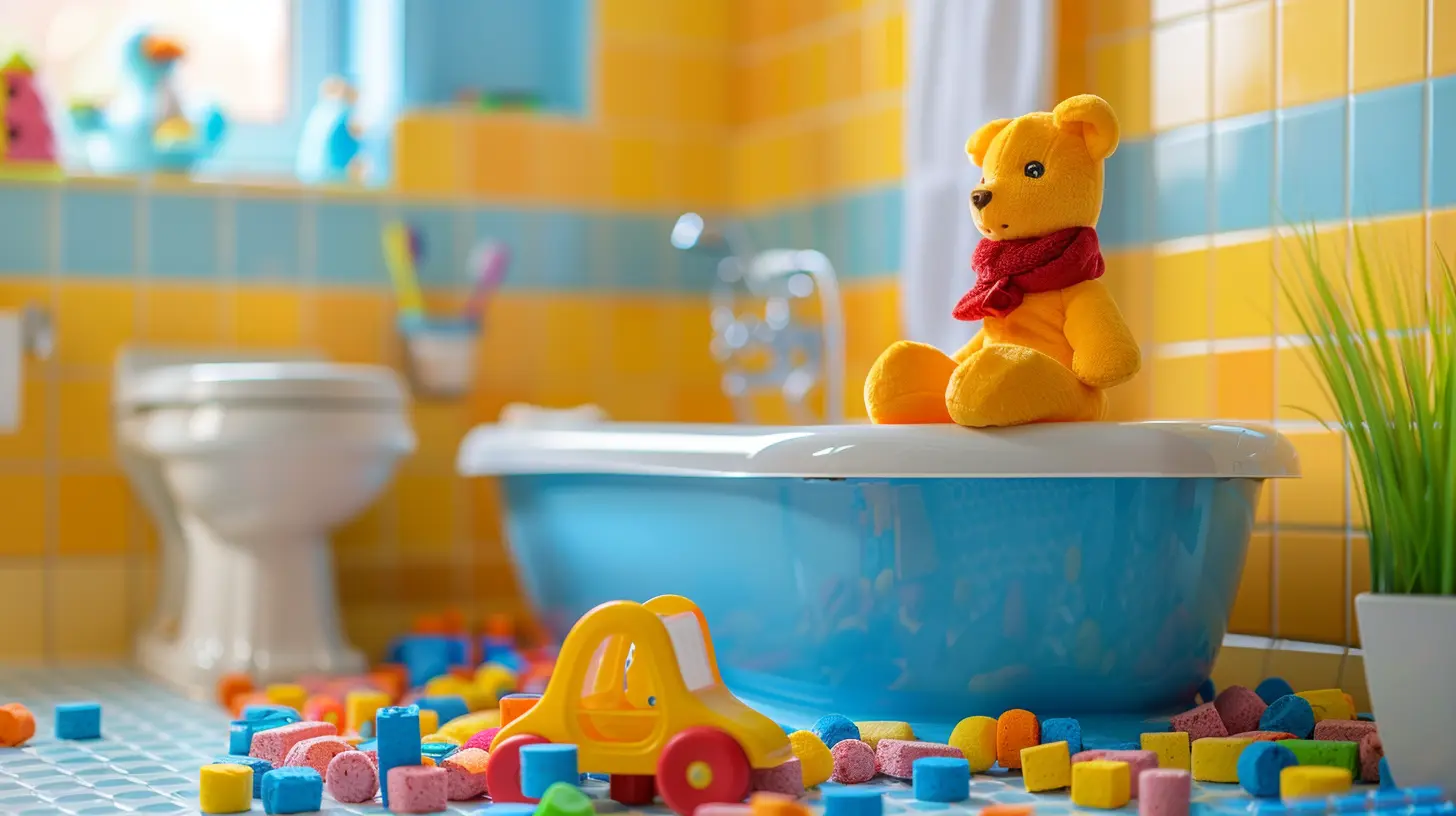
1. Keep Dangerous Items Out of Reach
The simplest way to prevent accidents is by storing hazardous items out of your child's reach.- Lock Away Medications & Cleaning Products – Use childproof cabinet locks or store these items on high shelves.
- Razor & Scissors Safety – Keep sharp objects in locked drawers or medicine cabinets.
- Secure Toiletries – Avoid leaving shampoos, lotions, or soaps where little hands can grab and taste them.
A good rule of thumb? If it’s something you wouldn’t want your toddler playing with, it should be locked up or kept high up. 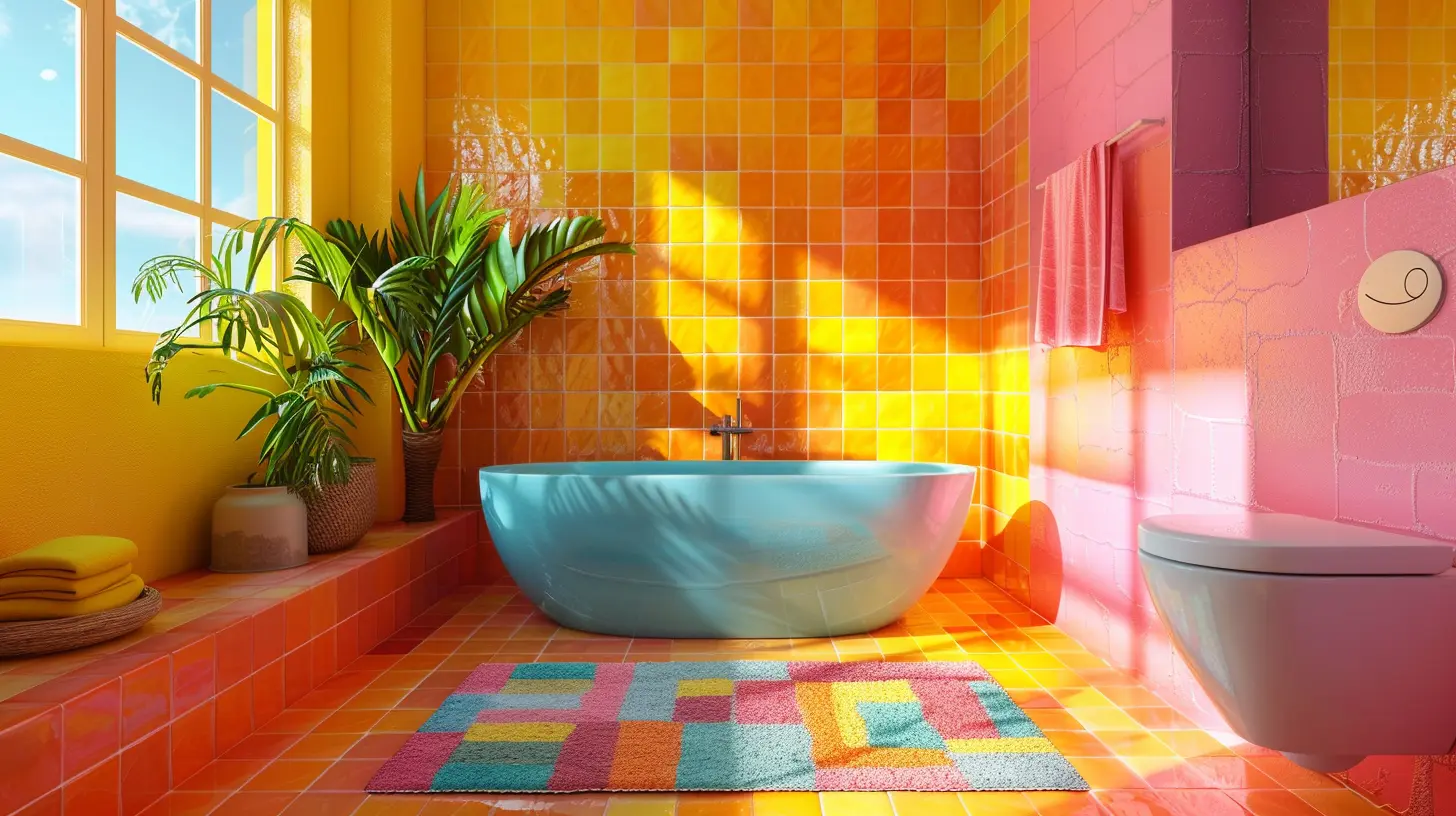
2. Install Childproof Locks
Curious toddlers love opening cabinets and exploring what’s inside. Installing childproof locks on cabinets, drawers, and even the toilet seat is a game-changer!- Cabinet Locks: Prevent access to cleaning supplies, medications, and other hazardous items.
- Toilet Locks: A toilet may seem harmless, but for a small child, it’s a drowning hazard. A toilet lock will prevent them from opening the lid and playing with the water.
- Doorknob Covers: If you prefer to keep the bathroom off-limits when not in use, install a doorknob cover to prevent access. 
3. Prevent Slips and Falls
Bathrooms are notorious for being slippery, especially after a bath or shower. A few simple changes can significantly reduce the risk of falls.- Non-Slip Bath Mats: Place these inside the bathtub and on the bathroom floor to provide grip.
- Soft-Close Toilet Lid: Prevent little fingers from getting pinched by installing a soft-close lid.
- Anti-Slip Stickers: If you don't want to use bath mats, anti-slip stickers on the tub floor can work just as well.
- Wipe Up Water Immediately: Get into the habit of cleaning up spilled water to avoid slippery surfaces.
A slip in the bathroom can cause serious injuries, so these small preventive measures make a big difference.
4. Regulate Water Temperature
Scalding from hot water is a common yet preventable accident. Here’s how to keep your child safe:- Lower Your Water Heater Temperature: Set your water heater to 120°F (49°C) or lower to prevent burns.
- Install Anti-Scald Devices: These faucet attachments regulate water temperature and prevent sudden hot water surges.
- Always Test the Water First: Before placing your child in the tub, dip your elbow or wrist in to check for a comfortable temperature.
5. Supervise Bath Time
No matter how many safety precautions you take, there’s one golden rule: never leave a child alone in the bathtub.- Be Present: Even stepping away for a few seconds can be dangerous. If you must leave, take your child with you.
- Use a Bath Seat Wisely: Bath seats can be helpful, but they don’t replace supervision. Children can still tip over if left unattended.
- Avoid Overfilling the Tub: A few inches of water are enough for a fun bath while minimizing drowning risks.
6. Cover Sharp Edges and Hard Surfaces
Kids are wobbly and prone to bumps and falls, especially in a space full of hard surfaces. Make sure to:- Use Corner Guards: Attach soft covers to the edges of countertops and bathtub corners.
- Opt for Soft Bath Toys: Avoid hard plastic toys that could cause injuries if a child falls onto them.
A padded bathroom is a safer bathroom!
7. Secure Electrical Appliances
Hairdryers, curling irons, and electric razors all pose electrical dangers. To minimize risks:- Unplug Appliances After Use – Never leave electrical devices plugged in when not in use.
- Store Them Safely – Keep them out of reach in locked drawers or cabinets.
- Use Outlet Covers – Installing safety plugs on bathroom outlets prevents tiny fingers from poking inside.
Water and electricity don’t mix, so always be mindful of where electrical appliances are placed.
8. Keep Towels and Toiletries Organized
A cluttered bathroom isn’t just messy—it’s dangerous. Towels on the floor can cause trips, and scattered toiletries can be tempting for kids to play with.- Use Hooks or Racks – Keep towels off the floor by hanging them properly.
- Have a Designated Space for Everything – Organize soaps, shampoos, and other essentials in bins or mounted shelves.
- Throw Away Empty Bottles – Avoid leaving empty or half-used containers within your child's reach.
A tidy bathroom is a safer bathroom!
9. Educate Your Child About Bathroom Safety
While physical barriers help, teaching your child simple bathroom rules is just as important.- "No Playing in the Bathroom" Rule – Make it clear that the bathroom is not a play area.
- Explain Why Some Items Are Off-Limits – Use age-appropriate language to help them understand why things like razors and medicines are dangerous.
- Praise Good Behavior – Encouraging safe bathroom habits will reinforce positive actions over time.
Children are naturally curious, so guiding them early on makes a big difference!
10. Make Bath Time Fun and Safe
Creating a safe bathroom doesn’t mean it has to be boring. Bath time can still be fun and enjoyable while staying safe!- Use Fun Bath Toys – Just ensure they are soft, mold-resistant, and safe for babies.
- Sing Songs or Tell Stories – Engage your child to make bath time a happy and distraction-free experience.
- Have a Routine – A structured bath time routine helps children understand boundaries and expectations.
Safety and fun go hand in hand when it comes to bath time!
Final Thoughts
Your bathroom can be one of the most hazardous places in your home for a young child, but with the right precautions, it can become a safe and comfortable space. From locking away hazardous items to adding non-slip mats, small tweaks can make a massive difference in preventing accidents.Remember, supervision is key, and no safety measure can replace keeping a close eye on your child. By implementing these childproofing strategies, you can have peace of mind knowing your little one is safe every time they step into the bathroom.
So, what are you waiting for? Start childproofing today and turn your bathroom into a safe haven for your little explorer!
all images in this post were generated using AI tools
Category:
ChildproofingAuthor:

Max Shaffer
Discussion
rate this article
5 comments
Maria Barnes
Bathroom: Where kids find their inner ninja!
May 16, 2025 at 4:35 PM

Max Shaffer
Absolutely! A playful bathroom can inspire creativity, but safety should always come first. Consider non-slip mats and cabinet locks to keep little ninjas safe during their adventures!
Arlo Meyers
Childproofing your bathroom is essential for ensuring safety. Simple measures, like securing cabinets, using non-slip mats, and keeping hazardous products out of reach, can make a significant difference. Remember, vigilance is key; consistent checks will help maintain a safe environment.
May 15, 2025 at 4:24 AM

Max Shaffer
Thank you for highlighting the importance of childproofing! Your tips on securing cabinets and keeping hazardous items out of reach are vital for ensuring safety in the bathroom. Vigilance is indeed crucial for maintaining a secure environment.
Oberon Davis
Childproofing your bathroom ensures safety and peace of mind. Small changes can make a big difference in your child's well-being.
May 12, 2025 at 4:28 AM

Max Shaffer
Absolutely! Simple adjustments can significantly enhance your child's safety in the bathroom. Thank you for emphasizing this important aspect!
Theodore McCabe
Great tips! Childproofing the bathroom is essential for safety. Simple adjustments can prevent accidents and keep little ones safe.
May 9, 2025 at 2:55 AM

Max Shaffer
Thank you! I'm glad you found the tips helpful—ensuring safety in the bathroom is crucial for our little ones.
Berenice Palmer
This article provides essential tips for keeping bathrooms safe for children. Simple measures like securing cabinets and using non-slip mats can make a significant difference in preventing accidents. Great advice!
May 7, 2025 at 5:06 AM

Max Shaffer
Thank you! I'm glad you found the tips helpful for enhancing bathroom safety for children. Your feedback is much appreciated!


